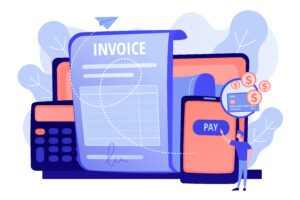Today, a medical practice’s productivity and efficiency depend heavily on its ability to code and charge for evaluation and management (E/M). CPT codes in the range of 99202 to 99499 are used in billing for E & M codes. These are services rendered by a doctor or other medical practitioner who is in charge of managing or assessing a patient’s health. Evaluation and management services do not include procedures like radiography, surgery, diagnostic testing, or other specialized treatments.
What does E&M codes mean in the medical field?
The different physician and provider services that are mostly focused on patient evaluation and management are represented by E&M codes. E&M coding centers on the cognitive services rendered by healthcare providers, including patient consultations, physical examinations, and medical decision-making processes, rather than on procedures or tests.
The key components of billing for E&M codes:
The following are the main components of billing for E&M codes:
1. History: This part entails getting a thorough history of the patient’s past medical history, social background, family history, and current ailment.
2. Examination: Medical professionals examine the patient physically, evaluating several body systems that may be pertinent to the issue that is now being presented.
3. Medical Decision-Making: This part includes the intricacy of diagnosing a patient and creating a plan of care while taking into account variables including the patient’s condition severity, the possibility of complications, and the available treatments.
The Foundational Elements of Healthcare Billing for E/M Codes:
The foundation of medical billing in both hospital and outpatient settings are E/M codes. These are the most commonly used codes, and their use has a big influence on the revenue cycle management of healthcare providers. Precise E/M coding guarantees that healthcare providers receive just compensation for the time and complexity associated with patient care.
The Importance of E&M Coding in the Medical Field:
For a number of reasons, E/M codes are essential to healthcare revenue cycle management.
1. Correct Billing: By offering a uniform framework for recording and classifying the services rendered during patient interactions, E/M codes contribute to correct billing. This lessens the possibility of under- or over coding, which may result in audits or claim rejections.
2. Reimbursement Determination: A major factor in figuring out how much is reimbursed for medical services is the E/M codes. The degree of intricacy and intensity of the services rendered is indicated by each E/M code, and this has an immediate impact on the amount of payment. The healthcare provider will be paid appropriately if E/M services are coded correctly.
3. Compliance: Adherence to healthcare rules, including those established by the Centers for Medicare and Medicaid Services (CMS), depends on accurate coding and recording of E/M services. Adherence to these regulations is crucial in order to evade penalties, audits, and possible legal complications.
4. Data analysis and research: In the healthcare sector, E/M codes also facilitate these processes. By using standardized codes, healthcare organizations can collect and analyze data regarding interactions between patients, treatment patterns, as well as and outcomes. This data can be used for research projects, trend analysis, and improved healthcare delivery.
Also Read:
- Clinical Laboratory Billing
- Importance of Medical Billing Services for Ambulatory Surgery Centers
- Importance of Clinical Documentation Improvement
Common CPT Codes used in billing for E/M codes:
Which E/M codes are most frequently seen? If you are paying for time-based electronic message management services, have the following codes handy:
- 99202 codes: 15 to 29 minutes
- 99203 codes: 30 to 44 minutes.
- 99204 codes: 45 to 59 minutes.
- 99205 codes: 60 to 74 minutes.
- 99212 codes: For 10 to 19 minutes.
- 99213: for 20 to 29 minutes.
- 99214: 30 to 39 minutes.
- 99215: 40 to 54 minutes.
When determining pricing depending on the complexity of the management and assessment services provided, consider the following codes:
- 99212: easy difficulty level; little chance of issues.
- 99213: minimum complexity, minimal risk, or minimal potential for problems
- 99214: moderate complexity, moderate risk, or potential for complications
- 99215: Extremely complicated, dangerous, or prone to problems.
Take Care of Your Medical Billing by Working with The Medicators:
As you are well aware, when managing your medical and billing procedures, there are dozens of codes in addition to E/M codes and many variables to take into account. Keeping track of them all and staying current with rules and guidelines for proper coding may be somewhat demanding. Because proficient and successful coding is essential to the success of your profession, you cannot ignore this essential part of your operations! Collaborate with The Medicators Medical Billing Services to manage your medical coding and billing process from beginning to end. Our team of professionals is ready to relieve you of this enormous burden so you can concentrate on what really matters to your patients.
Conclusion:
In conclusion, the management of the healthcare revenue cycle depends heavily on Evaluation and Management (E/M) codes. They offer a uniform method for describing and recording the services rendered during patient visits. Guaranteeing correct invoicing, suitable payment, and adherence to healthcare laws. Healthcare workers who are involved in the coding and billing procedures must comprehend the distinctions between E/M codes and other coding systems, such as CPT codes.









